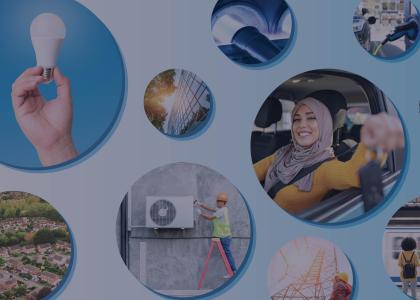Energy efficiency programs serving utility customers have grown rapidly over the past decade. While the rates of growth may have slowed in the last couple of years, most states have policies in place to achieve higher and higher energy savings from utility energy efficiency programs. In order to achieve high energy savings, program administrators can follow two key strategies: (1) get more customers to participate, and (2) get more savings from each participating customer. A report released today by ACEEE examines this first strategy—achieving high program participation. We examined a set of prevalent program types to identify programs that have achieved high participation and better understand the challenges with data and nomenclature. We also wanted to identify program areas that are ripe for growth in participation rates.
Participation rates are key variables for estimating the future potential savings of energy efficiency programs, especially for efficiency program plans and integrated resource planning. Participation rates also are key metrics for tracking past program results. Program administrators, evaluators and regulators need accurate tracking of program participation to evaluate program impacts and success.
But while program participation is simple in principle, it is complex in practice. We found that despite the importance of participation data within many aspects of efficiency (such as potential studies, program planning, implementation, and evaluation), it’s not reported consistently or completely. There are no industry standards and conventions for defining and measuring participation. Definitions and nomenclature used to report participation metrics vary significantly, although there is generally greater consistency of such metrics for a given type of program.
Despite these data challenges, we identified many examples of programs that have achieved high participation. Programs serving mass markets, such as residential customers shopping for lighting products, can move millions of products annually. The cumulative result is that in some markets energy-efficient lighting comprises 40% of all household lighting. Other programs serve much smaller markets with more specialized needs, such as industrial customers or commercial builders. Leading new commercial construction programs may reach 50-60% of all new projects. Some programs providing custom incentives to the largest commercial and industrial customers have achieved 50-70% participation over several years. Other types of programs, such as those serving small- to medium-size manufacturers, are ripe for growth in participation rates (another ACEEE report documents successful practices for reaching this sector).
The keys to high participation are not too surprising. They are simply the fundamentals of successful energy efficiency programs: (1) good program design that makes participation easy and offers a range of services valued by customers, (2) attractive incentives, and (3) effective and innovative marketing to targeted customer segments.
Our research reveals that an ever-growing number of utility customers are already participating in energy efficiency programs, and many more could participate. The resulting energy savings are expanding the utility energy efficiency resource pie—a resource that reduces utility system demand and corresponding costs. Participating customers receive the direct benefits of improved energy efficiency while all customers receive the broader system benefits, such as lower pollution and job creation, that cost-effective energy efficiency programs can provide.
This broader view of program participation is important as we seek to achieve a variety of economic and environmental goals through improved energy efficiency. Program participation needs to be seen through the lenses of overall portfolios and applicable markets over long periods. In leading regions with longstanding programs, a majority of customers have benefited directly from participating in available programs. In this way program administrators are expanding the pie of energy savings through improved energy efficiency, enabling ever more customers to share this important resource and collectively contribute to a cleaner energy economy.




